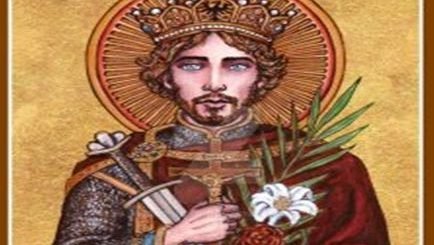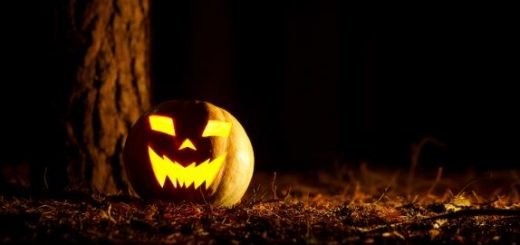Origin Stories of 10 Old Christmas Songs and Carols
The month of December delights us with several Christmas carols on the radio, in churches and other community gatherings. And you probably know the lyrics to all those carols. However, what you may not know are the origin stories behind some of your favorite Christmas carols. Who actually wrote those carols? And apart from them being related to Christmas, what other undertones do they have? Answers to these questions, as well as many other facts, will be revealed in the stories behind 10 of your favorite old Christmas songs and carols.
‘Jingle Bells’

Opening Lines from ‘Jingle Bells’
This Christmas song, which was written by James Lord Pierpont in 1857, had absolutely nothing to do with Christmas. The original title of the song was “The One Horse Open Sleigh”. In the lyrics, James was talking about racy teenage life and behavior of the 19th century. A church choir took a great gamble by playing it for their congregation during Thanksgiving service. Surprisingly, the members were completely blown away by the choir’s performance, and soon it became a staple in the church. As time progressed, it became more associated with Christmas celebrations than Thanksgiving.
Another fascinating fact about this carol is that it was sung by astronauts aboard the Gemini 6 in space on December 16, 1965. This catapulted it to become the first Christmas song played in space.
‘All I Want for Christmas is My Two Front Teeth’
The inspiration for this Christmas song came from a second-graders class in 1944 in Smithtown, New York. Donald Yetter Gardner, a teacher himself, was helping the kids compose a Christmas song. The kids were asked to say their wishes starting with “All I want for Christmas is…” Considering they were second-graders, most of them had their front teeth off and as such had difficulties uttering the words in clarity.
When Donald got home, he figured that most of the kids would really want to have their two front teeth back; hence the title of the song in the first place. Gardner is said to have written the song in just under 30 minutes.
‘O Holy Night’

Extract from ‘O Holy Night’
This Christmas carol was very popular during the Franco-Prussian War. The lyrics were written by a wine merchant and poet called Placide Cappeau in 1843 at the behest of a Roquemaure parish priest. The tune to the carol, however, was composed by Adolphe Adams. The carol talks about Jesus Christ’s birth and what it means for humanity’s redemption.
Historians believe that the French authorities banned this song when they found out that the writers were a Jew and an atheist. In 1871, a French Soldier sang the song during immense clashes with Prussia. Since then, the song has been described by many as an entrancing Christmas song that frequently evokes feelings of sobriety and calmness in the listener’s heart.
‘Winter Wonderland’
When Richard Smith wrote this song in 1934, he was suffering from a terrible case of tuberculosis in a Pennsylvania hospital. The song was his entry song into a jingles contest for an ad company. While he was ill at the hospital, Smith peered outside his window and saw kids playing in the snow. This reminded him of his own childhood. Those memories of his formed the inspiration for this carol. Sadly, Smith did not recover from his illness. He died in 1935. Kind courtesy to Smith, today, we can enjoy several versions of ‘Winter Wonderland‘.
“Santa Claus is coming to Town”

Lyrics extract from ‘Santa Claus is coming’
This Christmas song was composed and written by J. Fred Coots and Haven Gillespie respectively. Gillespie was in a state of sadness when he wrote this song. He was mourning the passing of his brother in 1934. It took him just under 15 minutes to write the song during a subway ride. In one of his books titled: Stories Behind the Greatest Hits of Christmas, the writer stated that every time he heard the song, he instantly got consumed by sorrow because it reminded him of his lost brother.
‘I Saw Three Ships’
‘I Saw Three Ships’ is a traditional folk song from England that evolved from the songs of traveling carol singers (also known as minstrels). The carol first appeared in the 17th century in Derbyshire. In 1833, it appeared in one of the works of William Sandys.
There are different versions of this carol. There was the version that appeared in the Oxford Book of Carols. In 1960, John Renbourn arranged this carols for guitar.
And what was in those ships all three?
On Christmas day on Christmas day
And what was in those ships all three?
On Christmas Day in the morning
The underlining message and theme of the song have been subject to different interpretations. In one interpretation, the song talks about three ships en route to Bethlehem. Some people have interpreted this carol to mean three ships that were purportedly transporting the skulls of the Three Wise Men to a cathedral in Germany. Today, the story about Jesus Christ and Mary features prominently in this carol.
‘Let it Snow!’
Sammy Cahn and Jule Styne wrote down this song on a hot summer day in July, 1945. This explains why the writers wished for some respite with a snow fall. Interestingly, the writers never meant for the song to become a Christmas song. Nothing in the lyrics talks about Christmas.
‘Good King Wenceslas’
This Carol was written during the Victorian era by John Mason Neale in 1853 in the West Sussex County. The carol has a traditional folk tune to it. The story in the carol follows a Bohemian King or Duke who sends provisions to peasants on Boxing Day. Although the story was not true, the concept of giving and caring are similar to the overarching spirit of Christmas in general.
J.M. Neale based the carol on another story written by Czech poet Vaclav Alois Svoboda in 1847. The genesis of Vaclav Alois’s story lies in the story of the Duke of Wenceslas (907-935). Wenceslas was born to a Christian Duke of Bohemia in Vaclav (a region around present day Czech Republic) and a pagan mother. His father died when he was 12, and the mother became regent. His mother disapproved of his desire to practice Christianity. However, his grandmother, Ludmilla, took him in under her wings. She looked after Wenceslas and raised him in secrecy to become a Christian. His mother later found out about this. She banished Wenceslas’s grandmother and had her guards murder her. At the age of 18, Wenceslas inherited the dukedom and banished his mother and her pagan court. He installed a very successful system of governance and was generous to his people. Unfortunately, Wenceslas’s life was cut short at the age of 22 by his jealous brother, Boleslav, the Cruel.
A few centuries after Wenceslas’ death, the Catholic Church made him a saint (Patron Saint to Czech Republic) because of his numerous charitable works. To this day, Wenceslas of Bohemia’s story continues to feature prominently in several other Christmas carols. There is a Wencelas statue in Prague on Wenceslas Square.
‘Silent Night’
This Christmas carol was written by Father Joseph Mohr from Mariapfarr, Austria in 1816. The original German title reads as ‘Stille Nacht! Heilige Nacht’. The score of this carol was composed by Franz Xaver Gruber, a school teacher. Gruber was also a very gifted guitar player.
It is reported that Father Mohr’s organ got broken in the middle of practice, and therefore, he asked his friend Gruber to use his guitar to compose a score for the carol. The intended audience for the carol was Father Mohr’s church of St. Nicholas in Oberndorf, Austria.
There were some rumors that Father Mohr needed a guitar score so that he could play the carol on his guitar. Another account of this story states that the carol was meant for children to sing on Christmas Eve to their parents.
Over the two centuries that it has been around, ‘Silent Night’ has become one the most recorded songs in the world. Interestingly, this carol was commonly sang by both German and British soldiers during a brief halt in hostilities on the 24th of December 1914 in WWI.
‘Hark! The Herald Angels Sing’
This carol is popularly referred to as just ‘Hark!’. It was written by Charles Wesley. Charles was the brother of John Wesley, the famous leader and founder of the Methodist Church. This carol came about when Charles was walking to church one early morning and heard the bells sounding. When it was written, the title was slightly different. It was Hark How All the Welkin Rings. The word ‘Welkin’ back then referred to paradise or heaven.
Aside this carol, Charles wrote over 9,000 hymns and poems for the Methodist Church. In subsequent years, the tune of this carol, which we have come to love so much, was composed by Felix Mendelssohn in 1840.



























